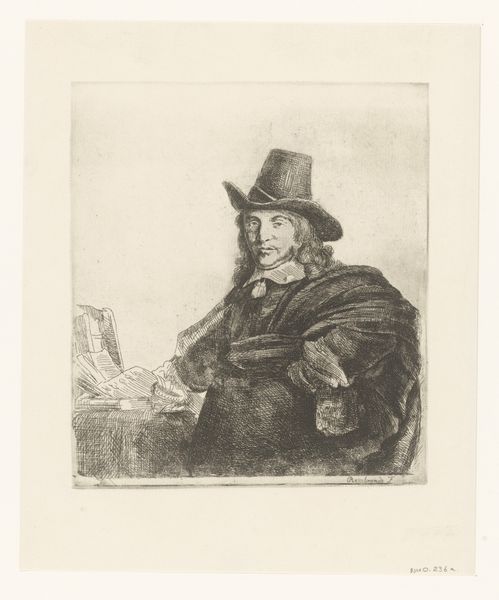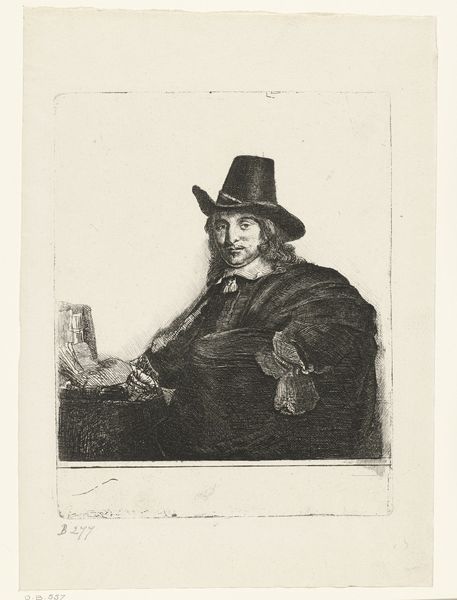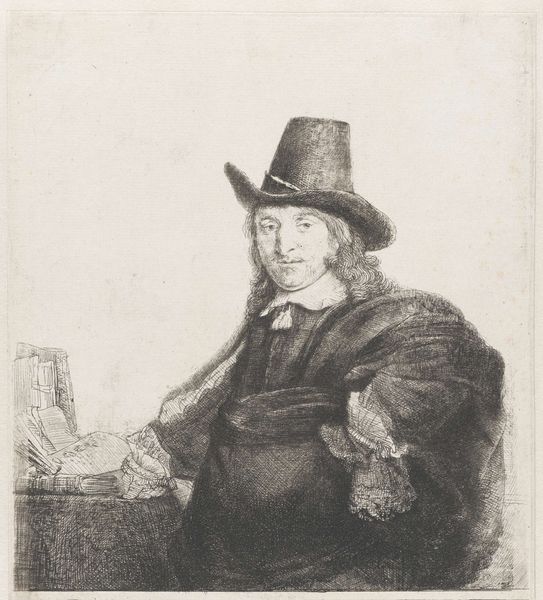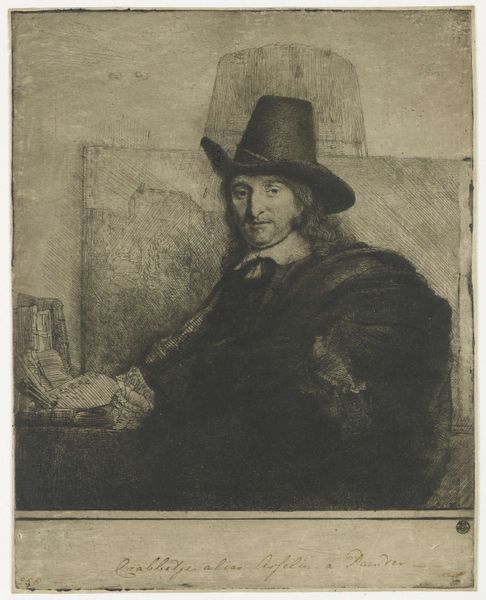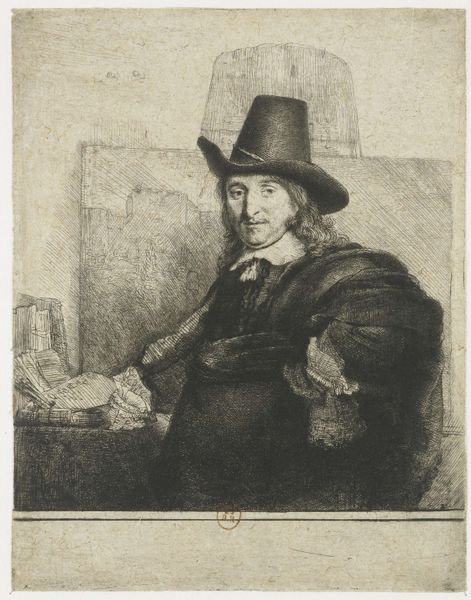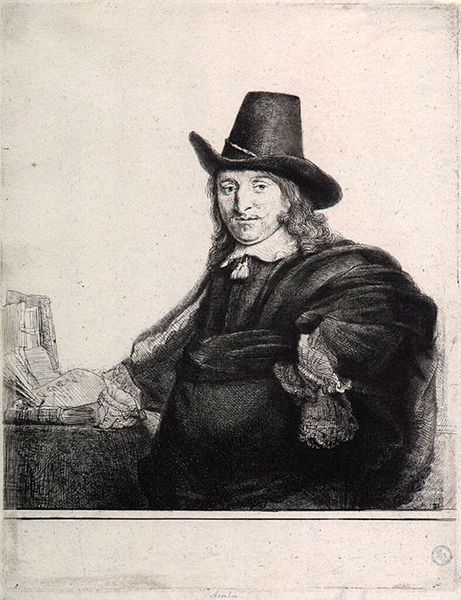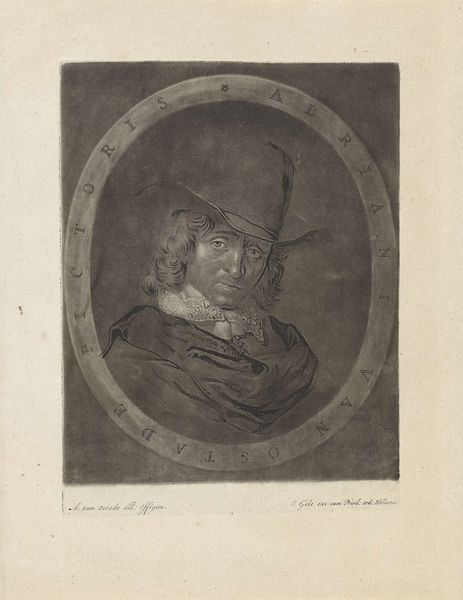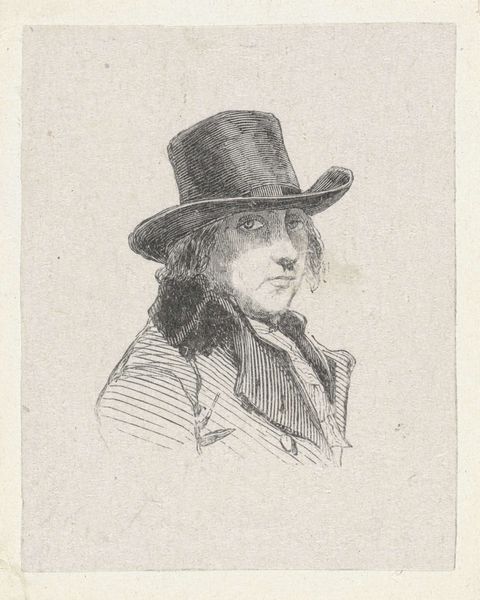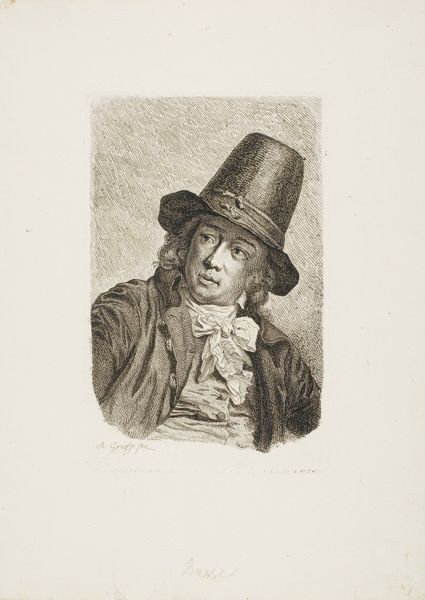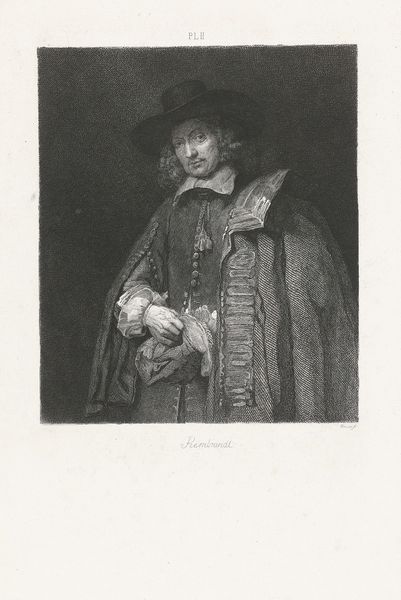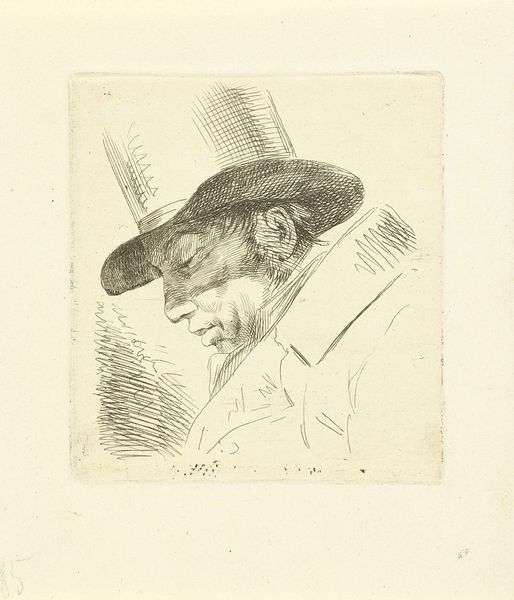
drawing, print, etching
#
portrait
#
drawing
#
dutch-golden-age
# print
#
etching
#
charcoal drawing
#
pencil drawing
Dimensions: height 216 mm, width 170 mm
Copyright: Rijks Museum: Open Domain
Editor: Here we have Rembrandt van Rijn's "Portret van de schilder Jan Asselijn," an etching that might date back to 1645, give or take a few decades. I’m really struck by the textures he’s managed to create just through line work. What catches your eye about it? Curator: The stark contrast between the densely hatched areas, particularly in Asselijn's clothing, and the relative emptiness of the background is compelling. Notice how this interplay of light and shadow not only defines form but also creates a certain dynamic tension. The lines themselves, their varying thicknesses and directions, contribute to this visual rhythm. Editor: I see that, how the hat and the fabric almost seem to merge. Is there a term for that blending effect? Curator: It's less about deliberate blending and more about the structural use of the medium. Rembrandt allows the etching to reveal the process of its making. We are keenly aware of the marks, the deliberate scratches on the plate, each contributing to the overall tonal value and texture. Consider, too, the economy of line used in the face compared to the detailed rendering of the garments. Editor: So, the real story isn’t just the ‘what’—a portrait—but how Rembrandt manipulated the etching medium itself? Curator: Precisely. Focus on the distribution and density of the marks, not to see merely a representation, but a constructed visual field governed by internal compositional logic. Are we meant to see a realistic rendition of Jan Asselijn or a study of chiaroscuro rendered with etching needles? That tension is vital to its interpretation. Editor: It's fascinating how the formal elements create such complexity. Thanks for helping me see beyond the surface! Curator: The pleasure is all mine. Understanding how technique shapes our perception is at the core of understanding the artwork itself.
Comments
No comments
Be the first to comment and join the conversation on the ultimate creative platform.

